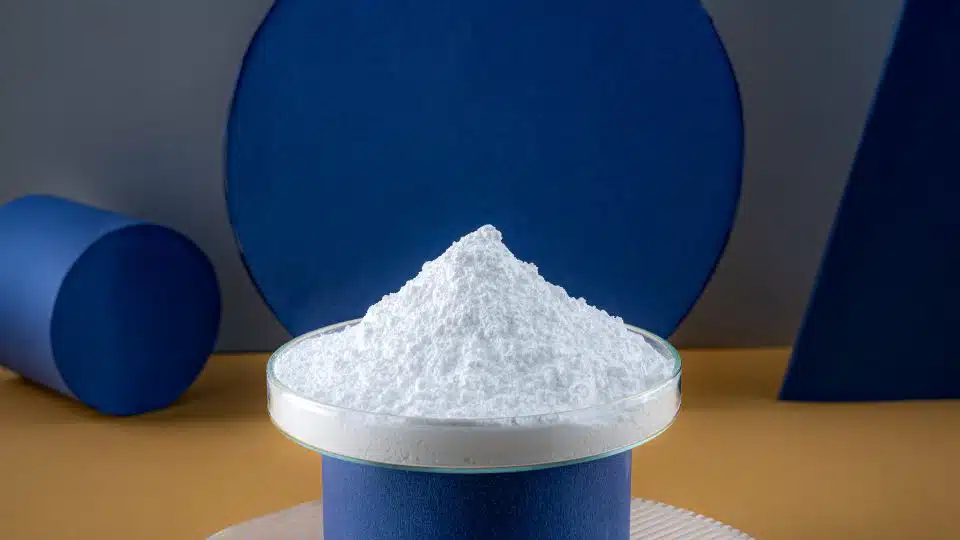The benefits of zinc stearate in the paint and coatings industry are numerous, enhancing both the performance and aesthetics of the final product as it acts as a release agent, lubricant and anti-caking agent. If you want to have a basic understanding of this chemical compound in the paint industry, you have come to the right place. In this blog, TKC Vietnam will explore what zinc stearate is and look at its application in the paint and coatings industry.
What is zinc stearate?
Zinc stearate is a metallic soap made from the reaction of stearic acid and zinc oxide.
Chemical properties and structure
Zinc stearate is a fine, soft, odorless white powder with the chemical formula Zn(C18H35O2)2. A notable feature of this compound is its very small particle size with a diameter of less than one micron. The image below shows the molecular structure of Zinc stearate.
This chemical compound is a white, porous powder that is insoluble in water but soluble in organic solvents. In manufacturing, its main use is to prevent plastic parts from sticking to molds. Additionally, it is used in the rubber industry as a processing aid, enhancing the flow of rubber compounds and reducing stickiness.
While there are other metal soaps such as magnesium stearate or calcium stearate, Zinc stearate has several advantages over them. For example, it has superior water resistance and is less susceptible to moisture absorption, making it a great choice for products that need to be stored in humid environments.
Additionally, it has a lower melting point and is more easily dispersed in the coating, making it easier to work with. It is also more compatible with other ingredients and less likely to react with them, making it a more stable choice.


